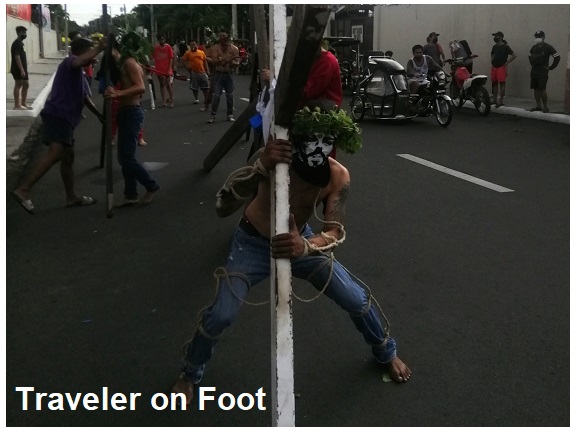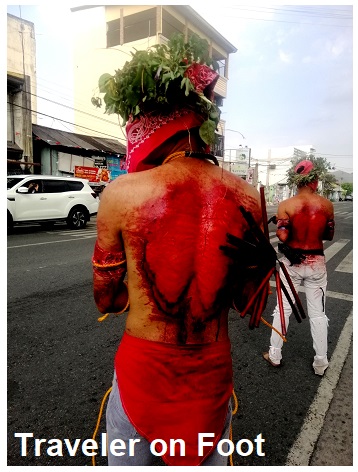SIZZLING SEMANA SANTA. Holy week in the Philippines usually falls on the peak of the summer months. Depending on the Catholic calendar, the movable feast of the Samana Santa is observed all over the country in between the weeks of March and April. It is a season when the days are longer, the weather is hotter and one wonders if planet Mercury was replaced by Pampanga as the closest place to the sun.
The moment I stepped out of the car in Dau, it felt like I entered into a preheated oven. But I forgot about the heat wave because this is a chance to witness up close and in the flesh a line of bloodied flagellantes doing this extreme ritual in this sizzling Semana Santa.
PENETENSIYA. Holy week rituals were handed down to generations of Filipinos through long ages of catechism instructions. I grew up in a household that prohibited playing of loud music and was admonished by elders when participating to any form of games that could inflict wounds throughout the holy week because of the belief that wounds wont heal like how they are depicted in the images of the suffering Christ.
Just as the same in the olden days, fasting, abstaining from meat, joining and exhausting savings to sponsor processions and spending longer hours praying in humid churches are still practiced by the devout Catholics up to this day. The Spanish friars in the seventeenth century, particularly the Jesuits and Franciscans introduced to the indios the penetensiya or physical mortification to repent of sins. According to sociologist, Fernando Nakpil-Zialcita bodily mortification were not alien practice among pagan Filipinos. Thus, Filipinos may have been convinced to flog themselves to honor the death of Christ (Cuaresma, 2000).
CRIMSON TRAIL. A sight to behold in rural towns are the flagellantes who beat themselves bloody to literally imitate the passion of Christ. Flogging themselves on the back with segments of bamboo at the end of a rope and whips embedded with splinters of broken glass, flagellantes form a crimson trail on the side of the road. They wear kapirosas or cotton cloth to mask up over which are shrubs or vines.
Flagellantes simulate Christ’s crucified position with arm spread and ankles crossed on the pavement right in front of makeshift chapels for the pabasa or on the church patio along the route. This practice of flagellation is not officially approved by the church that is why flagellants are not permitted to enter inside churches.
EPILOGUE: VERBATIM ET LITERATIM. The re-enaction of the way of the cross is repeated in various towns around the country and in different ways and intensity. But the gore and blood I witnessed on the roadside under Pampanga’s scorching summer sun is an extreme and verbatim interpretation one’s faith.
For the flagellantes, flagellation is a way of reciprocating God’s blessing with physical sacrifice.






Leave a comment